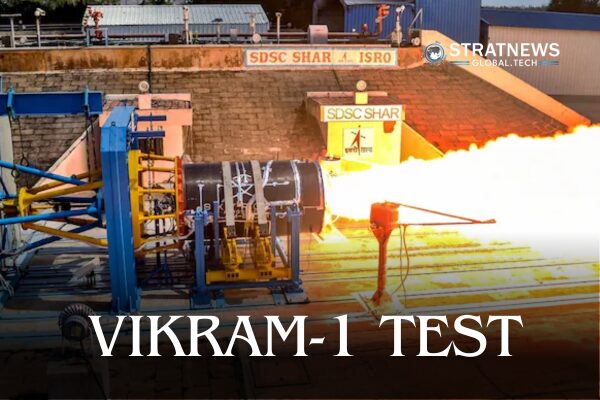Skyroot Aerospace has taken a significant step toward its first orbital mission, successfully completing a static fire test of the first stage of its Vikram-1 launch vehicle — marking a major milestone for India’s private space industry.
The test was conducted at the Satish Dhawan Space Centre (SDSC-SHAR) in Sriharikota, under the supervision of the Indian Space Research Organisation (ISRO). This marks the first successful test firing of the Kalam-1200 solid rocket motor — now the most powerful monolithic solid-fuel rocket stage ever developed by an Indian private company.
Measuring 11 meters in length and capable of delivering a peak vacuum thrust of 1200 kilonewtons, Kalam-1200 is named in honor of the late Dr. APJ Abdul Kalam, India’s former president and a pioneer in aerospace engineering. The motor is designed using carbon composite materials and features a flexible nozzle for steering, controlled by Vikram-1’s onboard mission computer.
The test, which lasted around 110 seconds, confirmed key performance metrics such as thrust output, burn consistency, thermal protection, and the actuation of the flex nozzle system. These validations are critical as Vikram-1 prepares for its debut launch later this year.
Once in flight, Kalam-1200 will propel the rocket to over 50 kilometers in altitude, after which a high-precision pneumatic separation system will disengage the first stage, allowing the upper stages to continue toward orbit.
Skyroot Aerospace CEO and Co-founder Pawan Kumar Chandana called the moment “exhilarating and humbling,” crediting the achievement to years of effort by the company’s young engineering team. “This success highlights how access to ISRO’s facilities and IN-SPACe’s support is catalyzing private innovation in India’s space sector,” he said.
Skyroot COO and Co-founder Naga Bharath Daka emphasized the importance of the milestone: “A successful booster test validates the integrated functioning of the stage — from propulsion to structural and thermal performance. This result energizes us as we approach the Vikram-1 launch.”
Congratulating the team, IN-SPACe Chairman Dr. Pawan Goenka posted on X (formerly Twitter): “A landmark achievement. This successful static fire test puts Skyroot on the path to making history with India’s first private orbital launch.”
Vikram-1 is set to become the first Indian privately developed rocket to reach space, aiming to deliver agile and cost-effective launch solutions for small satellite operators across the globe.


